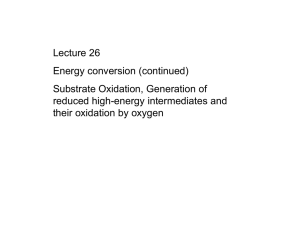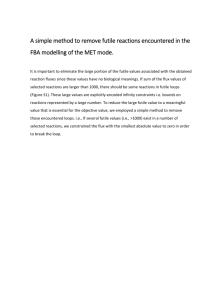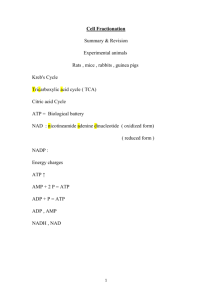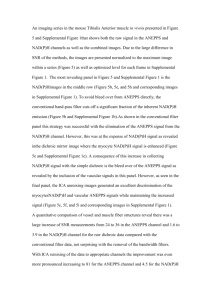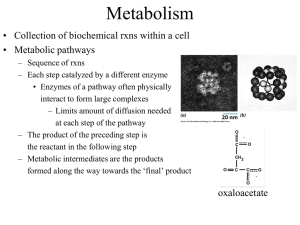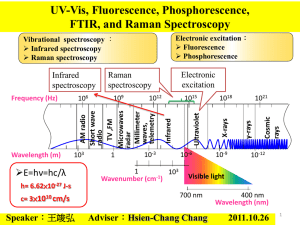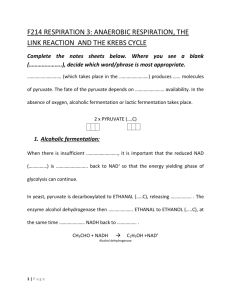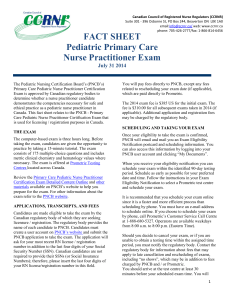The effect of NAPRTase overexpression on the
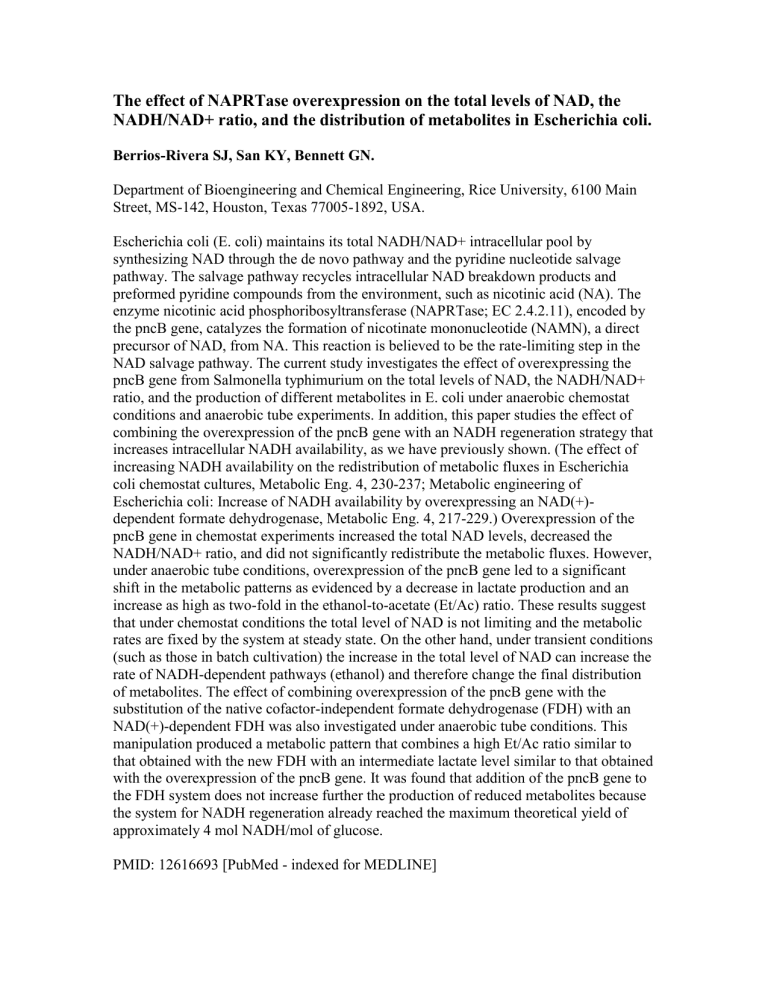
The effect of NAPRTase overexpression on the total levels of NAD, the
NADH/NAD+ ratio, and the distribution of metabolites in Escherichia coli.
Berrios-Rivera SJ, San KY, Bennett GN.
Department of Bioengineering and Chemical Engineering, Rice University, 6100 Main
Street, MS-142, Houston, Texas 77005-1892, USA.
Escherichia coli (E. coli) maintains its total NADH/NAD+ intracellular pool by synthesizing NAD through the de novo pathway and the pyridine nucleotide salvage pathway. The salvage pathway recycles intracellular NAD breakdown products and preformed pyridine compounds from the environment, such as nicotinic acid (NA). The enzyme nicotinic acid phosphoribosyltransferase (NAPRTase; EC 2.4.2.11), encoded by the pncB gene, catalyzes the formation of nicotinate mononucleotide (NAMN), a direct precursor of NAD, from NA. This reaction is believed to be the rate-limiting step in the
NAD salvage pathway. The current study investigates the effect of overexpressing the pncB gene from Salmonella typhimurium on the total levels of NAD, the NADH/NAD+ ratio, and the production of different metabolites in E. coli under anaerobic chemostat conditions and anaerobic tube experiments. In addition, this paper studies the effect of combining the overexpression of the pncB gene with an NADH regeneration strategy that increases intracellular NADH availability, as we have previously shown. (The effect of increasing NADH availability on the redistribution of metabolic fluxes in Escherichia coli chemostat cultures, Metabolic Eng. 4, 230-237; Metabolic engineering of
Escherichia coli: Increase of NADH availability by overexpressing an NAD(+)dependent formate dehydrogenase, Metabolic Eng. 4, 217-229.) Overexpression of the pncB gene in chemostat experiments increased the total NAD levels, decreased the
NADH/NAD+ ratio, and did not significantly redistribute the metabolic fluxes. However, under anaerobic tube conditions, overexpression of the pncB gene led to a significant shift in the metabolic patterns as evidenced by a decrease in lactate production and an increase as high as two-fold in the ethanol-to-acetate (Et/Ac) ratio. These results suggest that under chemostat conditions the total level of NAD is not limiting and the metabolic rates are fixed by the system at steady state. On the other hand, under transient conditions
(such as those in batch cultivation) the increase in the total level of NAD can increase the rate of NADH-dependent pathways (ethanol) and therefore change the final distribution of metabolites. The effect of combining overexpression of the pncB gene with the substitution of the native cofactor-independent formate dehydrogenase (FDH) with an
NAD(+)-dependent FDH was also investigated under anaerobic tube conditions. This manipulation produced a metabolic pattern that combines a high Et/Ac ratio similar to that obtained with the new FDH with an intermediate lactate level similar to that obtained with the overexpression of the pncB gene. It was found that addition of the pncB gene to the FDH system does not increase further the production of reduced metabolites because the system for NADH regeneration already reached the maximum theoretical yield of approximately 4 mol NADH/mol of glucose.
PMID: 12616693 [PubMed - indexed for MEDLINE]
